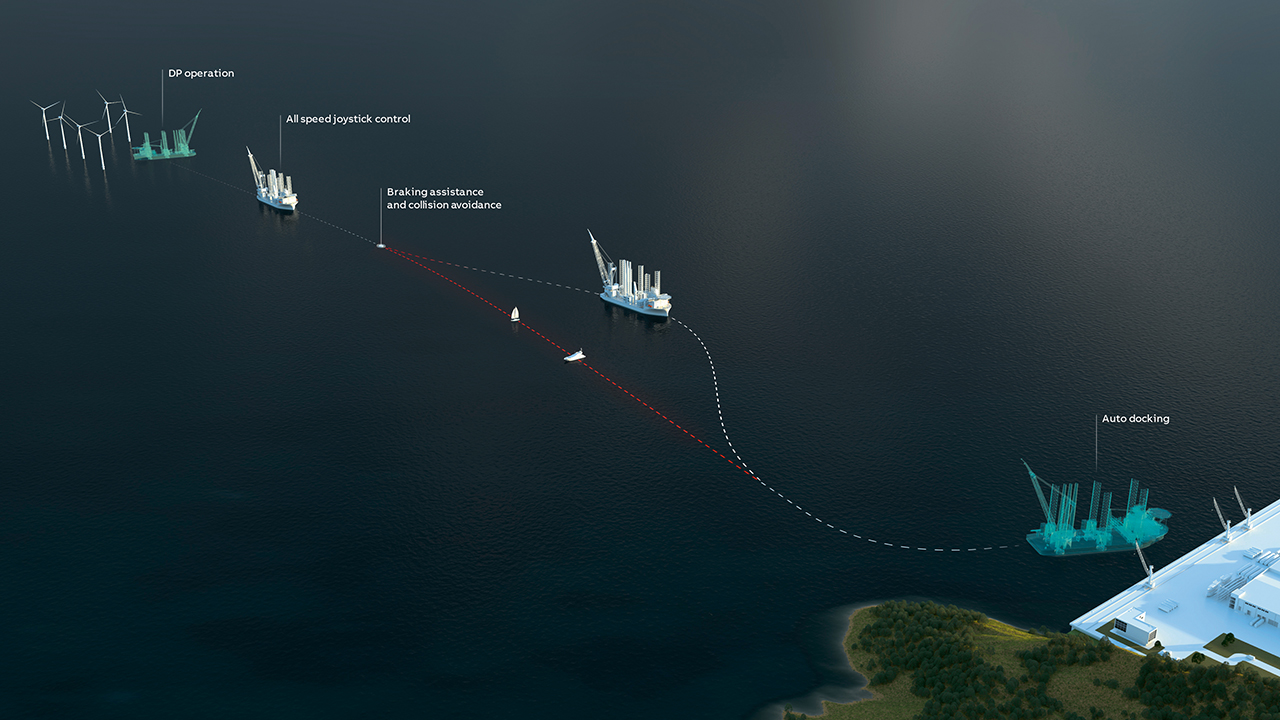
Collision Avoidance: Navigating the Future Safely
In a world where mobility is a constant, the need for robust safety measures has never been more critical. One of the key advancements addressing this concern is the development and integration of collision avoidance systems into various modes of transportation. These systems, leveraging cutting-edge technologies, play a pivotal role in preventing accidents and ensuring the well-being of individuals on the move.
Radar-Based Systems: Beyond the Horizon
One of the foundational pillars of collision avoidance is radar-based systems. Employing radio waves, these systems detect objects in the vicinity of a vehicle, providing real-time data crucial for making split-second decisions. Imagine a technology that extends the driver’s field of vision beyond what the human eye can perceive – that’s the power of radar-based collision avoidance.
Lidar-Based Systems: Precision in Perception
Lidar, or Light Detection and Ranging, is another game-changer in collision avoidance. By emitting laser beams and measuring the time it takes for them to return, lidar systems create highly detailed 3D maps of the surroundings. This precision enables vehicles to navigate complex environments with accuracy, avoiding obstacles efficiently.
Camera-Based Systems: Eyes on the Road
Cameras are the eyes of collision avoidance systems. With advancements in computer vision, these systems interpret visual data to identify objects, pedestrians, and road signs. The integration of artificial intelligence enhances the capability to distinguish between harmless elements and potential threats, contributing to a safer driving experience.
Ultrasonic Sensors: Proximity Awareness
Ultrasonic sensors operate by emitting sound waves and measuring their echoes, providing information about objects’ proximity. Widely used in parking assistance systems, ultrasonic sensors contribute to collision avoidance by alerting drivers to obstacles in their immediate vicinity.
Understanding Sensor Technologies: The Core of Collision Avoidance
The functionality of collision avoidance systems hinges on the effectiveness of sensor technologies. Whether radar, lidar, cameras, or ultrasonic sensors, the ability to capture, process, and interpret data in real-time is paramount. This section delves into the intricacies of these technologies, highlighting their role in creating a comprehensive safety net.
Enhanced Safety: The Primary Goal
The primary objective of collision avoidance systems is, undoubtedly, to enhance safety on the roads and in various industries. By providing timely warnings and, in some cases, actively intervening to prevent collisions, these systems have proven instrumental in reducing accident rates and saving lives.
Reduction in Accidents: The Tangible Impact
Statistics bear witness to the tangible impact of collision avoidance systems. As these technologies become more widespread, the frequency of accidents decreases significantly. The ripple effect extends to reduced traffic congestion, lower repair costs, and, most importantly, a decline in the number of fatalities.
Insurance Premium Reduction: A Win-Win Scenario
The benefits of collision avoidance systems extend beyond personal safety to financial advantages. Insurance companies recognize the risk mitigation provided by these systems, leading to reduced premiums for vehicles equipped with such safety features. It’s a win-win scenario where both individuals and insurance providers reap the rewards.
Environmental Factors: Navigating Nature’s Challenges
While collision avoidance systems showcase remarkable capabilities, they are not immune to environmental challenges. Adverse weather conditions, such as heavy rain or snow, can impact sensor accuracy. Understanding these challenges is crucial for both manufacturers and users in optimizing system performance under various circumstances.
Technical Limitations: Breaking Down Barriers
Technical limitations, although diminishing with each technological leap, still exist. This section explores the current constraints, such as limited range and potential interference, and the ongoing efforts to overcome these barriers. The evolution of collision avoidance technology is a dynamic process, with continuous innovation pushing the boundaries.
Integration Challenges: Harmonizing Technologies
The successful integration of collision avoidance systems into vehicles requires overcoming several challenges. Compatibility with existing vehicle controls, seamless communication between sensors and onboard computers, and standardized protocols are essential for ensuring the effectiveness of these systems across different platforms.
Artificial Intelligence Integration: The Future Beckons
The future of collision avoidance lies in the integration of artificial intelligence (AI). Machine learning algorithms enable these systems to adapt and learn from real-world scenarios, enhancing their ability to predict and respond to potential threats. This section explores the evolving landscape of AI in collision avoidance and its implications for the future of transportation safety.
Vehicle-to-Everything (V2X) Communication: A Network of Safety
Imagine a world where vehicles communicate with each other, sharing real-time information about their surroundings. V2X communication is a groundbreaking concept that holds the potential to revolutionize collision avoidance. This section delves into the possibilities and challenges of creating a connected network of vehicles for enhanced safety.
Advancements in Sensor Technologies: Looking Ahead
The rapid advancements in sensor technologies continue to shape the landscape of collision avoidance. From the miniaturization of sensors to the development of more robust and versatile components, this section provides a glimpse into the future of these technologies and their impact on the evolution of collision avoidance systems.
Real-World Examples of Collision Avoidance Success Stories
The effectiveness of collision avoidance systems is best illustrated through real-world examples. From automotive manufacturers implementing these systems to aviation companies ensuring airspace safety, this section showcases success stories that highlight the tangible benefits and life-saving potential of collision avoidance.
Automotive Sector: Driving the Change
The automotive sector has been at the forefront of adopting collision avoidance systems. From high-end luxury cars to budget-friendly models, manufacturers across the spectrum are integrating these systems as standard features. This section explores how the automotive industry is driving change and setting new safety standards.
Aviation: Safeguarding the Skies
The application of collision avoidance systems is not limited to the roads. Aviation, with its complex airspace dynamics, relies heavily on these systems to prevent mid-air collisions. This section delves into how collision avoidance is safeguarding the skies and ensuring the safety of passengers and crew.
Industrial Machinery: Navigating Workspaces Safely
Beyond traditional transportation, collision avoidance finds application in industrial machinery. Forklifts, cranes, and other heavy equipment benefit from these systems, minimizing the risk of accidents in busy workspaces. This section explores how collision avoidance is enhancing safety in diverse industrial settings.
Government Regulations: Setting the Standards
The implementation of collision avoidance systems is not only a matter of choice for manufacturers but also a regulatory requirement in many regions. This section provides insights into the current regulatory landscape, examining how governments worldwide are setting standards to ensure the widespread adoption of these life-saving technologies.
Industry Standards: Collaborative Progress
In addition to government regulations, industry standards play a crucial role in shaping the development and implementation of collision avoidance systems. This section explores the collaborative efforts of manufacturers, technology providers, and regulatory bodies in establishing and maintaining standards that drive progress.
Current Trends: From Awareness to Adoption
Consumer awareness and adoption of collision avoidance systems are on the rise. This section analyzes current trends, including the increasing demand for safety features, educational initiatives promoting the benefits of collision avoidance, and the role of consumer preferences in driving the market.
Educational Initiatives: Empowering Users
As collision avoidance technology becomes more prevalent, educational initiatives are essential to empower users. This section explores ongoing efforts to educate drivers, pilots, and industrial equipment operators about the capabilities and limitations of collision avoidance systems, fostering a culture of safety.
Machine Learning Algorithms: The Brain Behind Collision Avoidance
The integration of machine learning algorithms is a game-changer in collision avoidance. This section delves into how these algorithms enable systems to learn from past experiences, continuously improving their ability to predict and respond to potential collisions. The adaptive nature of machine learning enhances the overall effectiveness of collision avoidance.
Predictive Analysis: Anticipating Threats
Predictive analysis, powered by machine learning, enables collision avoidance systems to anticipate potential threats before they become imminent. This section explores the concept of predictive analysis and its role in creating a proactive safety net that goes beyond mere reaction to immediate dangers.
Initial Investment vs. Long-Term Savings: The Economics of Safety
While the initial investment in collision avoidance systems may seem significant, the long-term savings outweigh the costs. This section conducts a cost-benefit analysis, examining how the implementation of these systems translates into reduced accident-related expenses, lower insurance premiums, and overall economic benefits.
Overcoming Existing Limitations: A Continuous Journey
Every technology faces challenges, and collision avoidance systems are no exception. This section explores ongoing efforts to overcome existing limitations, from technical advancements to environmental adaptations, highlighting the collaborative spirit of the industry in ensuring continuous improvement.
Innovations on the Horizon: What to Expect Next
The future of collision avoidance holds exciting possibilities. From advancements in sensor technologies to the integration of AI and machine learning, this section provides a glimpse into the innovations on the horizon. As technology evolves, so does the potential to make transportation safer for everyone.
Conclusion: Navigating the Future Safely
In conclusion, collision avoidance systems represent a beacon of safety in our ever-evolving transportation landscape. From the automotive sector to aviation and industrial settings, these systems have proven their efficacy in preventing accidents and saving lives. As technology continues to advance, the integration of AI and the evolution of sensor technologies promise an even safer future on the roads and beyond.
https://projectworking0.blogspot.com/2023/11/beyond-wheel-navigating-future-with.html

